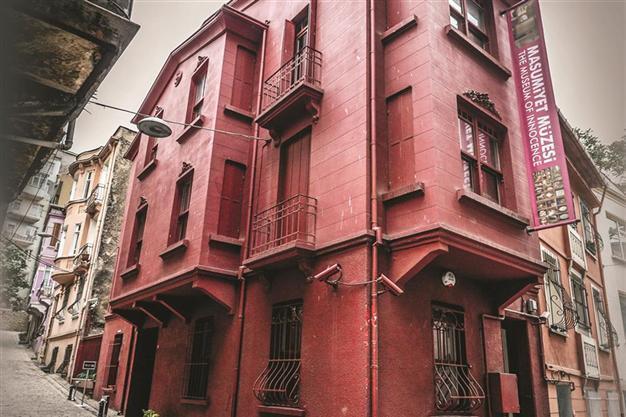Orhan Pamuk's Museum of Innocence as a work of art
ISTANBUL - Hürriyet Daily News

The intimate environment and the intimacy of the museum might be the effect of Pamuk’s book. From the entrance of the museum, the feeling of intimacy takes a hold of visitors.
The Museum of Innocence, eponymously named for Turkish Nobel Laureate Orhan Pamuk’s recent book, is an art space and art installation rolled into one, according to its director, Esra Aysun.Aysun has been directing the museum since July 2012, when the installations and architecture were finished. With her coming, however, many things changed. “We took private museum documents, and we tried to make the museum more institutionalized,” she said. Such a task, however, is difficult, as the financial and management side of the museum must be kept strong even as the facility’s intimacy and character is protected. The museum is managed with its own earnings – something that is very important, according to Aysun.
“This museum has a temporary collection. On the other hand, it is an art project. It is an installation by itself,” she said. This is how Aysun defines the Museum of Innocence. The Museum of Innocence has proved by its own existence that it is not a classic or ordinary museum.
“When a visitor enters the museum, he or she might not feel that he is entering an ordinary museum because the Museum of Innocence is not a prototype museum,” said Aysun.
The intimate environment and the intimacy of the museum might be the effect of Pamuk’s book. From the entrance of the museum, the feeling of intimacy takes a hold of visitors, and they might start to feel that they are entering an area of privacy.
“We try to keep the museum close to intimacy and special,” said Aysun. Each box, which is inspired and made according to the chapters of Pamuk’s book, subsumes the visitor, making them “feel” rather than “see” the works at the museum. This is the museum’s language of art. This is the hardest part of directing the Museum of Innocence because one of the most important things in the museum is protecting and keeping the museum real, according to Aysun, noting that the line between institutionalization on one hand and authenticity and intimacy on the other is very thin.
Visitors come to the museum with a certain desire for authenticity, and every effort is made to maintain this authenticity, from the works to the museum’s staff. Aysun said Pamuk expressively expected to know how visitors felt and what they wanted more from the museum. There are still unfinished boxes that will subsequently be added to the collection. The museum directorship likes to work with different artists in designing the boxes. The team is also considering organizing temporary exhibitions.
“Currently we are working on creating an audio guide. In order not to sound very institutional, the museum does not have a brochure. But we have seen that visitors ask where to begin. To keep the authenticity of the museum, Pamuk has become the audio guide,” she said. The Turkish version of the audio guide is expected to start in June.
Istanbul’s personality and judgment
It is fair to say that the Museum of Innocence is not a spectacular or monumental museum but something that belongs to a personal life in Istanbul. Even though it is not a city museum, the museum still gathers some old objects that belong to a certain era of Istanbul’s daily life and even the Turkish nation. In this way, the museum goes hand in hand with the book.
However, Aysun said, they do not aim to reflect the visuality of the book in the museum because each box installation is also an art installation by itself. Those art installation boxes represent the daily life of the city, as Pamuk said in a press conference almost one year ago to introduce the museum. Many visitors come several times, she said. On the other hand, there is still a prejudice against the museum. “I hear lots of judgments such as Orhan Pamuk ‘made his novel a museum.’ People say those things without visiting the museum. However, this is the wrong approach,” said Aysun. The museum has other aspects, too, Aysun said. “I would define this museum as a museum of contemporary art because today the definition of contemporary art has changed,” she said, adding that each box was an installation. “Curators can understand this approach very well.” Each of the installations is made with non-art objects, meaning that those objects have never been defined as an art object.
Another contribution that the museum makes to the artistic scene is that they bring non-contemporary art and contemporary art audiences together. “In Turkey, these audiences are not very into each other. For example, there are readers of literary works and a contemporary art audience, and those two do not meet in the same place usually,” she said, adding that the museum’s ability to gather the two sides in one place showed the space’s interdisciplinary approach.
















